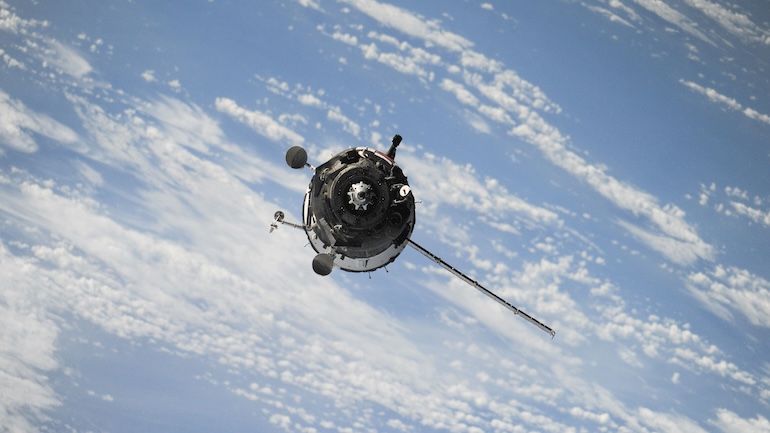
Project Kuiper, Amazon’s ambitious effort to build a space-based broadband internet service to compete with Elon Musk’s Starlink, has achieved lift off. The company has launched the first 27 Kuiper satellites as part of a broadband constellation that will eventually comprise 3200 satellites.
These first satellites were propelled into low Earth orbit by United Launch Alliance (ULA), a launch service formed by Lockheed Martin and Boeing. The Kuiper satellites hitched a ride aboard ULA’s Atlas V rocket, blasting off from Florida’s Cape Canaveral, and will soon be orbiting at an altitude of 393 miles above Earth.
“Our first 27 production satellites are operating as expected in low Earth orbit,” said Amazon CEO Andy Jassy.
Project Kuiper’s goal is to provide high-speed, low-latency internet access to any location on the globe, regardless of how remote. Amazon, having secured over 80 launches to deploy the 3200-satellite constellation, hopes the network will be operational for customers by the end of 2025.
Kuiper’s total budget is expected to be around $20 billion, dramatically higher than the $10 billion figure that Amazon first announced in 2019. Once established, annual operating costs could be $1 to $2 billion a year.
Kuiper faces stiff competition from Starlink, which after launching its first satellite in 2019, now controls over 60% of all satellites in use. Equipped with its own launching service, Starlink has flown more than 8,000 satellites into space, and typically launches one new flight weekly, with each rocket carrying satellites to replace or grow the existing constellation. Starlink provides internet access to some 5 million users in more than 100 countries.
While some Starlink users have complained about speed of access, the network is a major resource in rural areas. It’s also favored by intelligence agencies and military organizations, which use it for encrypted data transfer. Starlink is an essential tool for Ukraine in its war against Russia; the network has 40,000 access terminals in Ukraine used by both citizens and troops.
But backlash against Starlink based on Elon Musk’s cooperation with the U.S. government is driving European governments and companies to fund an alternative satellite broadband system. In February, U.S. negotiators threatened Ukraine with a shutdown of Starlink access if the embattled country didn’t agree to a U.S. deal on access to minerals. While there are European satellite providers, no alternatives exist at the level of Starlink.
Kuiper could well provide that alternative, though the fledging Amazon network faces challenges. Amazon must meet a July 2025 deadline imposed by the Federal Communication Commission to launch half of its constellation. If the company fails to meet the deadline—which is highly unlikely—it will only be allowed to launch double the amount of its currently operational satellites through the middle of 2026. This regulation prevents companies from obtaining some of the limited permissions to launch and then not putting them to use.
Industry experts expect Amazon to be granted an extension, given how clearly they’ve laid out a plan to launch a full constellation of satellites.
One major advantage for Kuiper: The satellite constellation will be integrated into Amazon Web Service’s (AWS’s) global network of cloud data centers, with its user base of the world’s largest enterprise customers. The potential benefit for these companies is that AWS’s cloud platform is well suited to handle all of the data-centric use cases required in large-scale global communications.

